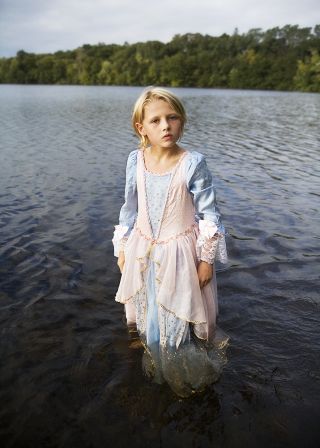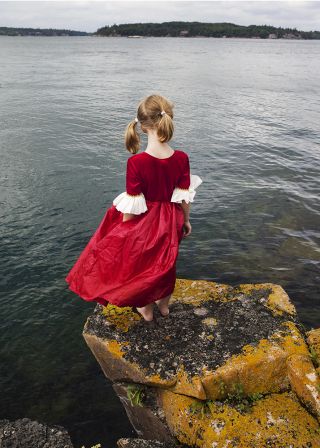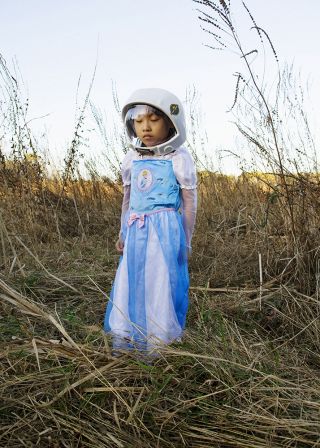
Gender
Princess Culture: What Is It All About?
Why do so many little girls insist on being princesses?
Posted August 24, 2015
What is it about little girls and princesses? Having grown up during the heyday of feminism, I was disinclined to all that was girly, pink, cloying, candy colored. It seemed to me that the cult of pink, which I assumed parents must have foisted on their little girls, was oppressive and devaluing, a kind of disempowering caricature of personhood.
Pink and all that the color represented, it struck me at the time, was a cultural shackle that little girls needed to be shielded from, since it was inevitably going to hold them back.
Little did I know that I would come to feel differently when I welcomed my own little girl into the world. I did my best not to conform to stereotypes when I bought her all different colors of clothing, studiously avoiding pink. Until my daughter was two, I never even purchased anything pink, and kept all pink clothing that had been inherited or given to my daughter off her, unless the gift giver was visiting.
One could say I had a phobia about pink. And yet as soon as my daughter could speak, almost as soon as she had out grown out of her first pair of carefully chosen gender neutral yellow sneakers, she started gravitating toward pink, almost in the manner than a sunflower strains toward the sun.
Actually her proclivity to pink seemed to parallel her situating herself in the gender category of “girl.” It was a logical sequence in her little mind. “I am a girl. Girls wear pink. Therefore, everything I wear and possess, should, optimally, be pink.”
Now I realize she may have been an extreme; some girls might like pink but not make a religion of it as my little one had. And yet, pink, for better or for worse, is what is referred to as a “signifier” of the feminine (children who are gender variant, i.e. do not identify with what is called the natal body, seem to traffic in pink as a marker of their variance. The girls who feel themselves to be boys assertively resist pink and the boys who feel themselves to be girls often embrace the color).
There seem to be other signifiers that go along with this pink=girl equation. For most little girls in this culture, princesses are an extension or expansion of the cult of pink, and horrifying as it is to contemplate commercialism’s ability to colonize the mind, princesses represent the apogee of all that is desirable for the little girls already in their pink phase. One cannot just dismiss the world of the princess culture, nor assume it is an invention of the Disney conglomerate. In fact, it is most likely that the popularity of all things princess, so dearly embraced by little girls under 5, has to do with something developmental, and likely less to do with consumerism per se.
So for the little people for whom pink has already become a religion, a “logical” extension or expansion of the concept, the next step, as it were, seems to be the princess. For many children deep in the grips of girl culture, no longer does everything have to be literally pink, as long as it can reference “princess.” This in turn is a kind of symbolic embodiment of something little girls seem to passionately want to identify with. What then is that something ?
It is this preoccupation with princess culture, coming as it does in a certain developmental window, that the photographer Blake Fitch has lovingly witnessed in a group of photographs entitled “Dress Rehearsal.”.

Her photographs of little girls dressed up in shimmering royal regalia have a dignity and solemnity and shed some light on the indisputable power of the princess in early girlhood.
These pictures of little girls in favorite costumes, so comfortable, powerful yet natural all at once, bring to mind tiny and more wholesomely assertive variants of the reigning females on Game of Thrones, or the aristocratic inhabitants of Downton Abbey; females who rule.

The little girls in Fitch’s portraits are hardly pawns, manipulated and exploited by consumerism. Quite the contrary. The princess persona seems to highlight these little girls’ beauty and individuality, and to map onto something about their developing identities that is just the opposite of weak and vulnerable. Indeed these photographs seem to offer a clue about what little girls may be after when they insist on wearing what some parents fear my be the very symbols of female oppression. We have to assume that apparel that makes so many little girls feel so good, so complete, and so empowered must have a representational significance that calls out for understanding, not simply compliance or condemnation.
Blake Fitch’s photographs seem to offer us a portal into the mind of the little girl as she struggles to embody and understand her femaleness. In clinging to pink and princess culture, perhaps a girl is celebrating and acknowledging a variety of things: her gendered body, her generative capacities, her ability to captivate and mesmerize (as all children can) as well as her place in the surrounding culture. Of course these questions and struggles map onto the gendered symbols of the surrounding culture; it’s a kind of a public language. Banal as they may be, these are common symbols, readable and unambiguous. Concrete and recognizable, they are what is available to work with for a small child, an accessible visual iconography. If we simply condemn commercialism and its takeover of little girls’ minds, we are not catching onto something important. So many parents valiantly try to steer their daughters away from the tyranny of Disney princesses, but as many who have tried know, it can be a losing battle. My daughter, despite every effort to have it be otherwise, refused items like an adorable green dress covered with images of tiny gardening tools or sophisticated navy blue velvet for special occasions. Pants? Forget about it. Her ideal clothing (including sleepwear and underwear) had to depict or represent Ariel the Mermaid; fortunately she stopped short of wanting a green iridescent tail. Why Ariel? Perhaps because she had red hair like my child. A recent nursery schooler I worked with was at the top of her game when wearing a long artificial pony tail marketed as that of Elsa, the protagonist of Frozen. The specific princess may be a personal preference, but it is the notion of someone being the beautiful heroine of her own story that carries the day. I guess we can’t argue with that.




